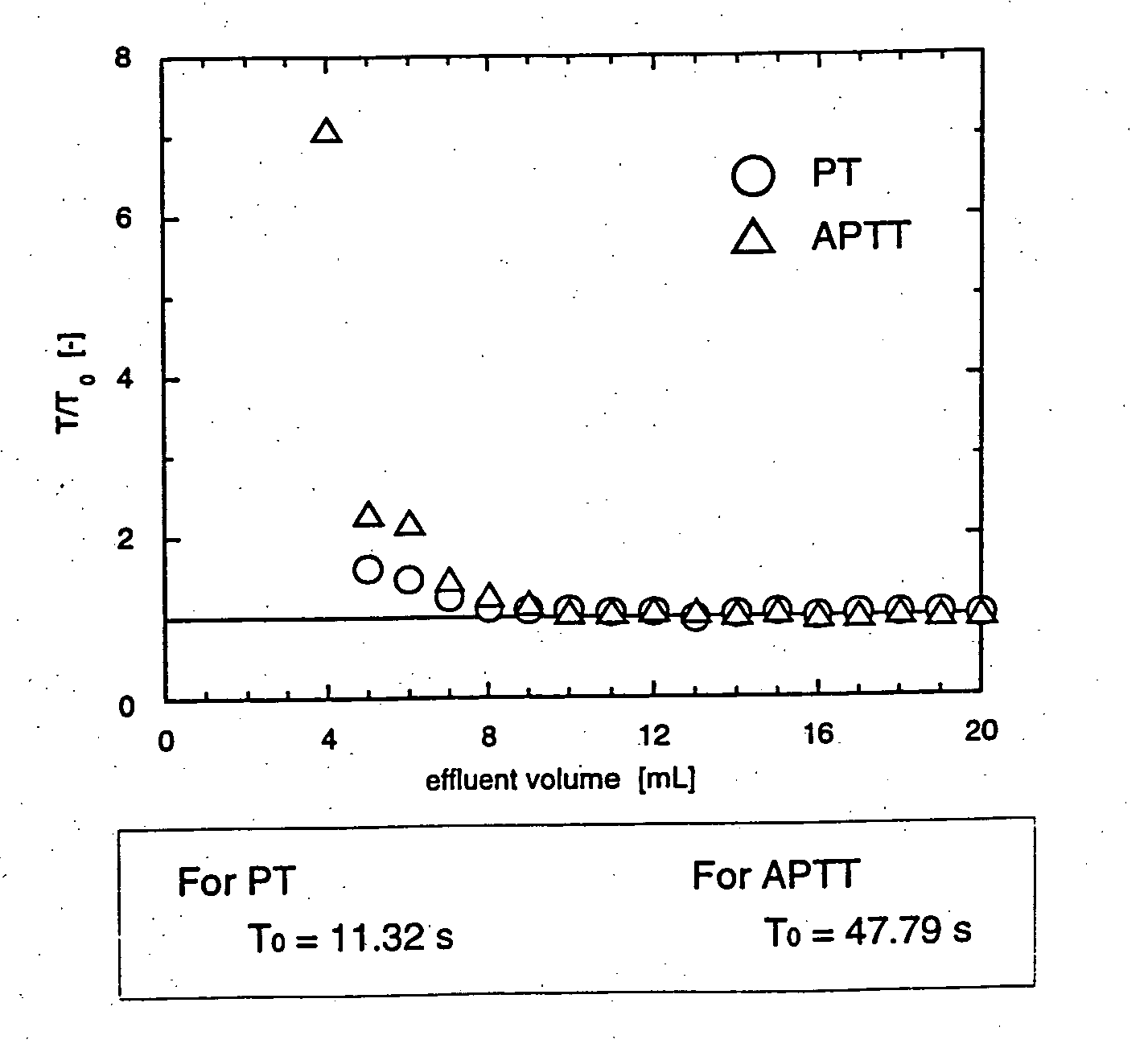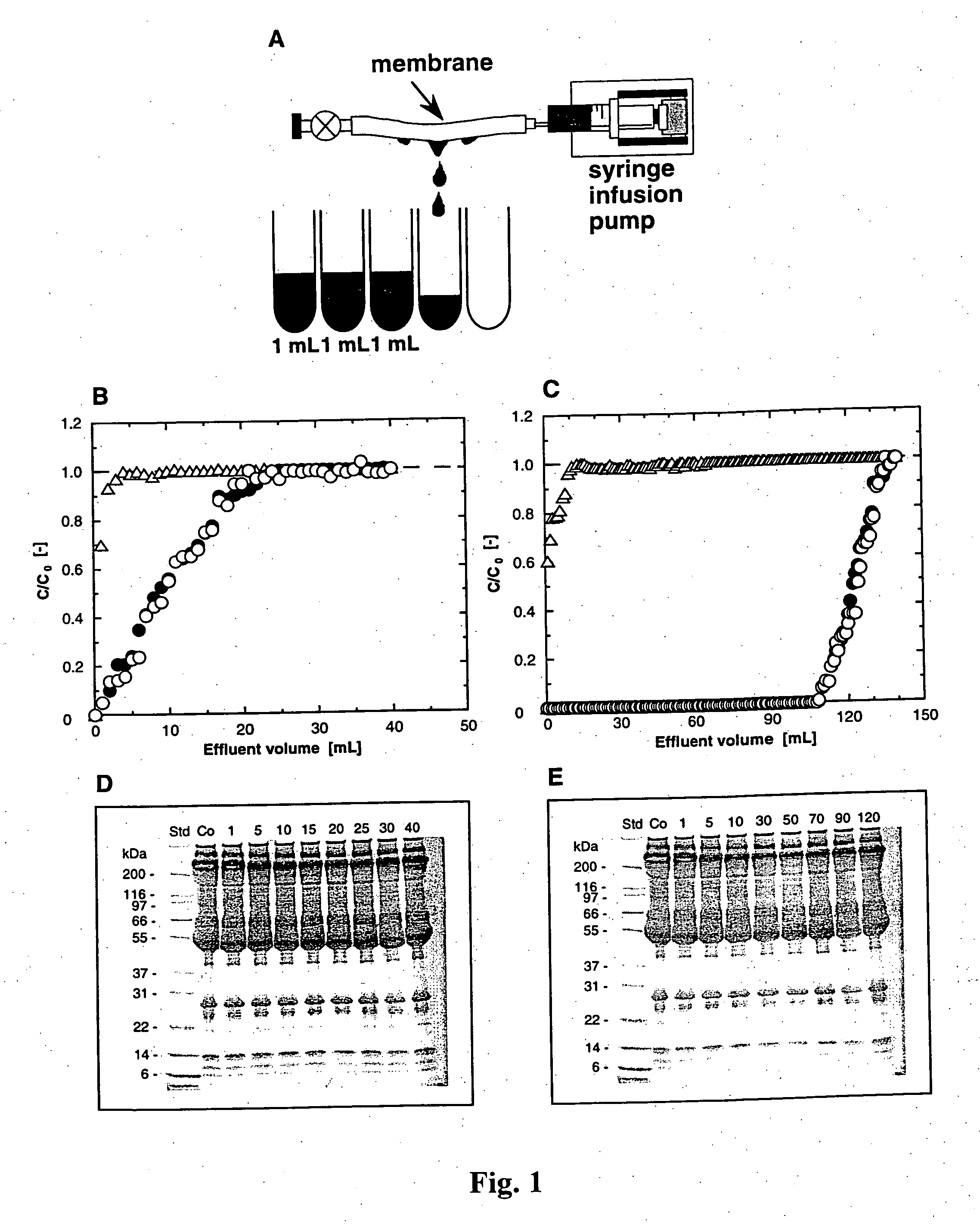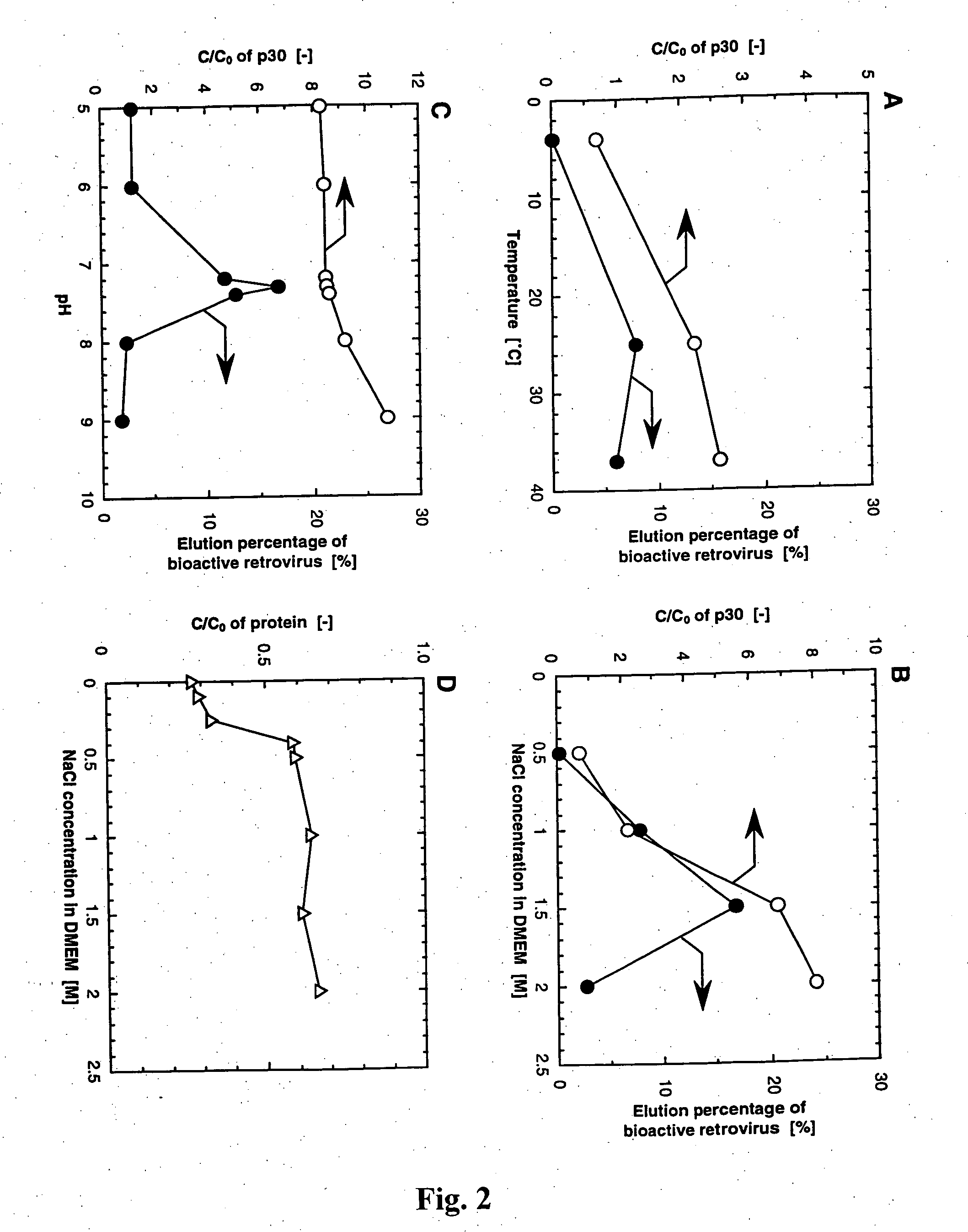Methods for removal, purification, and concentration of viruses and methods of therapy based thereupon
a technology of purification and concentration, applied in the direction of viruses, disinfection, filtration, etc., can solve the problems of limiting the effectiveness of recombinant retroviruses, low titers of viruses, instability of particles, etc., and achieves low clotting time, high capacity and flow rate, and high efficiency and rapid
- Summary
- Abstract
- Description
- Claims
- Application Information
AI Technical Summary
Benefits of technology
Problems solved by technology
Method used
Image
Examples
example
[0053] The invention will be further described in the following example, which does not limit the scope of the invention described in the claims.
Preparation of Hollow-Fiber Membranes
[0054] A microporous polyethylene hollow-fiber membrane (inner diameter 1.9 mm, outer diameter 3.2 mm, porosity 70%, average pore size 340 nm) supplied by Asahi Chemical Industry Co., Ltd., Japan, was used as a trunk polymer. Glycidyl methacrylate (CH2═CCH3COOCH2CHOCH2; GMA), an epoxy-group containing vinyl monomer, was graft-polymerized onto the microporous polyethylene membrane by electron-beam-induced graft polymerization (Lee et al., 1993, supra). The amount of GMA grafted was defined as the degree of grafting (DG):
DG (%)=[(weight gained) / (weight of trunk polymer)]×100
[0055] Polymer grafting of the GMA membrane was found to be about 200%, with an average side chain length of about 4700 GMA molecules and approximately 1018 side chains per gram of polyethylene. The GMA membranes were further react...
PUM
| Property | Measurement | Unit |
|---|---|---|
| pore size | aaaaa | aaaaa |
| pore size | aaaaa | aaaaa |
| pore size | aaaaa | aaaaa |
Abstract
Description
Claims
Application Information
 Login to View More
Login to View More - R&D
- Intellectual Property
- Life Sciences
- Materials
- Tech Scout
- Unparalleled Data Quality
- Higher Quality Content
- 60% Fewer Hallucinations
Browse by: Latest US Patents, China's latest patents, Technical Efficacy Thesaurus, Application Domain, Technology Topic, Popular Technical Reports.
© 2025 PatSnap. All rights reserved.Legal|Privacy policy|Modern Slavery Act Transparency Statement|Sitemap|About US| Contact US: help@patsnap.com



